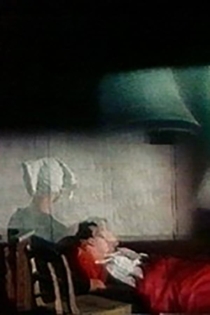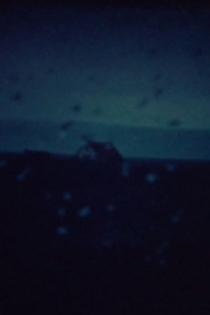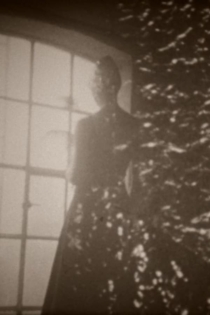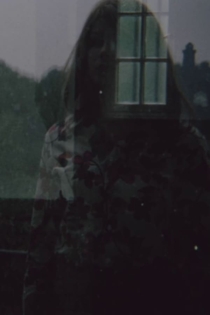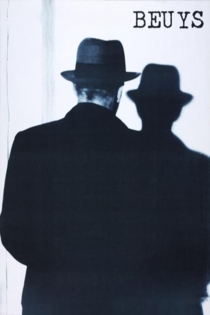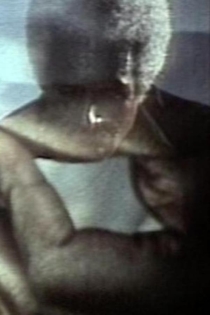
Dore O.
1946 (79 лет)Diwan
Werner Nekes
Ludi Armbruster, Christian d'Orville
Diwan, a lyric anthology, an outdoor movie with people. With people living in the surrounding precious and very beautifully photographed nature, are neither more nor less than one part of it. What Nekes manages there with landscape, as a cunning and quote many fine artist in a medium that runs in time, as he defeated the time changed, by themselves for change of scenery uses, as it interferes with the laws of chronology through the rewind ability of the camera or destroyed, which is a compelling and highly aesthetic experimental company.
Diwan

Abbandono
Werner Nekes
Dore O.
"...Nekes retreats behind his film. What is left is a double portrait, in which neither Dore 0. nor the grand landscape remain unchanged. The cold of the icy coastline - long shots of stones, snow and the sea - dwindles away before the image of Dore 0. Solitude is superflous, when the grandiose mountain meadow invites somersaults. ... In this case Nekes handles what he shows considerately. He releases the objects he portrays. He allows them to unfold. And so model and patterns actually serve another purpose: to let poetry grow, and energy and beauty and confidence nell'abbandono." (Dietrich Kuhlbrodt, Filmkritik, 9/1971).
Abbandono

Kaskara
Dore O.
Werner Nekes
An experimental film where a particular space is constantly "present" : there is a complex usage of superim- position, and of split-screen effects. The place shown is a part of a house in the country. Doors and windows are continually shown, emphasizing the film's concern with framing. Other images are present: city-scapes of a particularly sinister nature, implying a sense of ruin, and shots of a chorus on a stage. These shots begin and end the film which is accompanied by a vocal chant on the soundtrack.
Kaskara

T-Wo-Men
Werner Nekes
Dore O., Geeske Hof-Helmers
The film is divided into five parts differing in pictorial and musical structure. The plot, two women and their love for one another, is of secondary importance. An ingenious combination of stereoscopic images and montage of individual pictures make new qualities of perception accessible to the viewer. In the final part of the love scenes pictorial sequences and music build up to a delirious rhythm.
T-Wo-Men

Jüm-Jüm
Dore O., Werner Nekes
Dore O.
In “jüm-jüm” by Dore 0. and Werner Nekes, a girl swings for 10 minutes in front of a movie screen, on which is painted a phallus (slightly abstract and fairly large) The perspective is such that the girl appears to be swinging into and out of the phallus. It is one who is content to see through the specific event. the work exhausts itself in a trivial aspect, the literary. This is most comfortable for the critic: the literary content of a work is easiest to reproduce in a literary form of criticism.
Jüm-Jüm
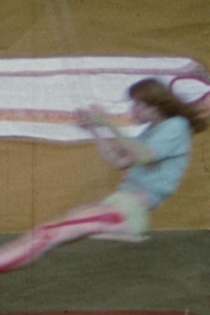
Candida
Dore O.
Jara Bernardes
In 1920 Frans Masereel published in Paris his woodcut series "The idea". Dore O. has draw inspiration from this work on her first feature film, a poetic fable about the human longing for a free and just society. Following Masereel "idea" Dore O's "CANDIDA" accesses old, anchored in the ancient Christian tradition and ideas, according to which such ideas and aspirations in the image of the naked woman find their embodiment.
Candida
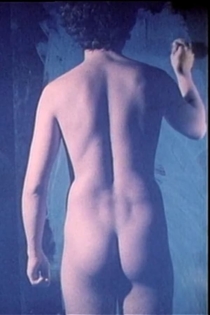
Blindman's Ball
Dore O.
A painterly, poetic experimental film with narrative elements. A woman is looking after an obviously blind man. She undresses, bandages and dresses him again. Since the action takes place on two temporal planes running in opposite directions, the couple's relationship appears to be in a state of stagnation. In-between, we are shown the images in the protagonists' minds: nightmares, an optical machine, but also erotic dreams from perhaps better days. Tango motifs and an aria (composed by Anthony Moore) reinforce the impression of a romantic chamber piece. The man's blindness refers to the Belgian physicist Joseph Plateau, who destroyed his sight through keeping his naked eye fixed too long on the sun while researching into the persistence of luminous impressions on the retina. The pictorial technique, with layer after layer dissolving into one another, is reminiscent of the overpainting technique deployed by the director in her work for the canvas.
Blindman's Ball
